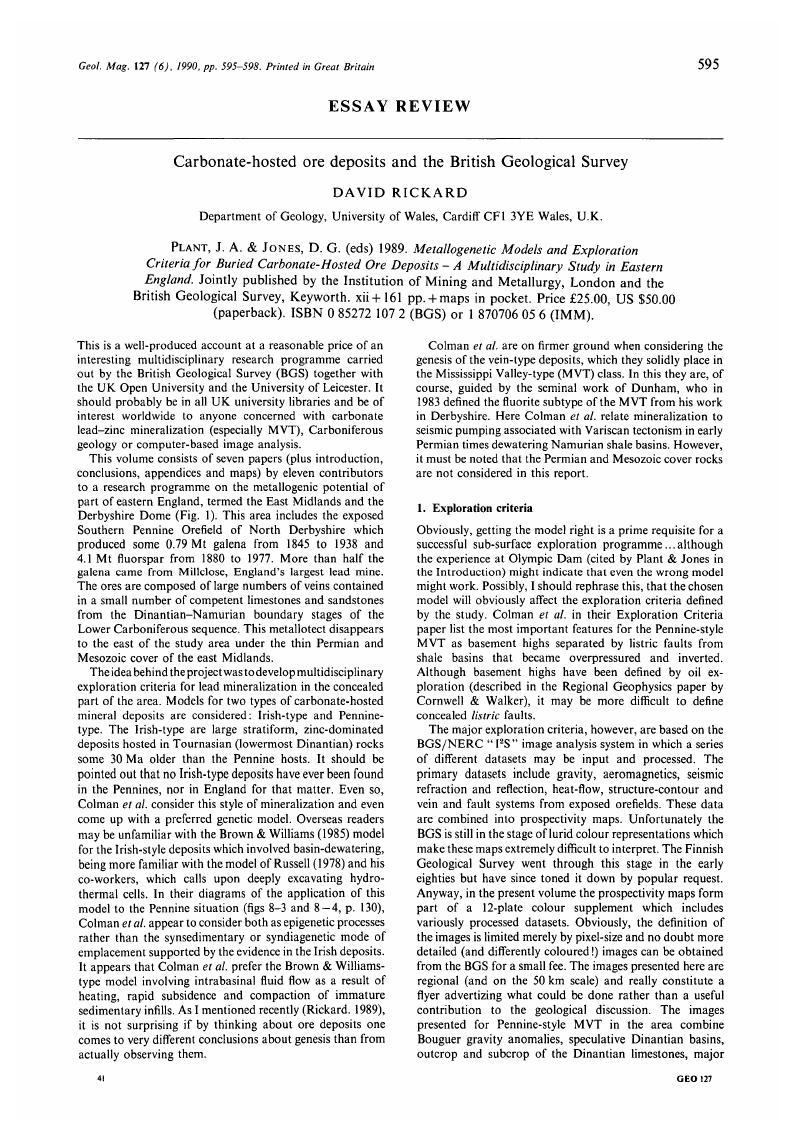Dunham, K. C. 1983. Ore genesis in the English Pennines: A fluoritic subtype. In
International conference on Mississippi valley type lead-zinc deposits. Proceedings volume (eds
Kisvar-sanyi, G.,
Grant, S. K.,
Pratt, W. P. and
Koenig, J. W.), pp.
86–
112.
University of Missouri,
Rolla Press.
Google Scholar 